10 tips for choosing expanded clay concrete blocks: pros, cons, brands, manufacturers
The growing number of developers and the desire to find economical, durable, durable and warm material for building a house has led to an increase in the popularity of lightweight concrete blocks. As well as gas block and foam block expanded clay steel blocks have become widely used, which have excellent thermal insulation properties, are safe, lightweight and relatively inexpensive. Many private builders call this material one of the best solutions for construction of a country house or cottages. Is it really? We deal with the question of the correct choice of expanded clay concrete, the pros and cons of the material, its types and manufacturers.
No. 1. How to make expanded clay concrete
Expanded clay began to be made in the middle of the last century, then it was safely forgotten about it, and today it is experiencing a new era of popularity. The composition of the material, like any lightweight concrete block, includes cement, water and sand, and as a filler is used expanded clay - granules of different sizes obtained by firing low-melting clay varieties. Granules expanded clay light due to the large number of pores inside, but strong, as they have a strong burnt shell. Granules with a size of 5-40 mm are used for the production of expanded clay concrete. Blocks can be solid or hollow. Moreover, a claydite concrete solution can be used for monolithic construction of the walls of the house.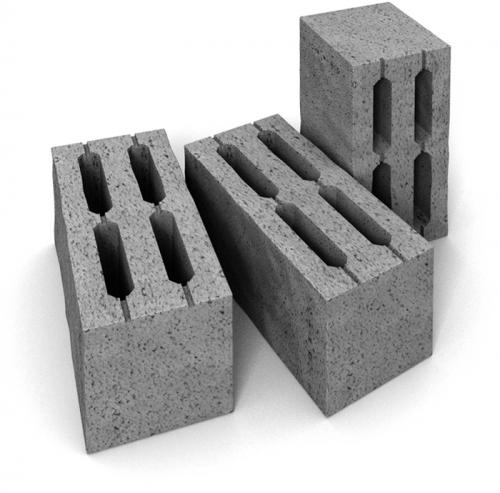
The ratio of expanded clay and cement is of great importance on the operational characteristics of the block. The more expanded clay, the more lightweight, warm and expensive the block will be. The quality of cement determines the brand of strength of the material. Due to the expanded clay filler, the material acquires unique heat-insulating properties, for which modern developers are so fond of it.
Unscrupulous manufacturers add glue additives to the mixture to increase the strength of the material, but this negatively affects environmental safety. Blocks in production are formed under the influence of vibrations, dried in special chamberswhere the heating is carried by streams of hot air or infrared rays.
Private and country houses, summer residences are being built from expanded clay concrete today. sheds, garages, fences, it is used for monolithic construction of buildings.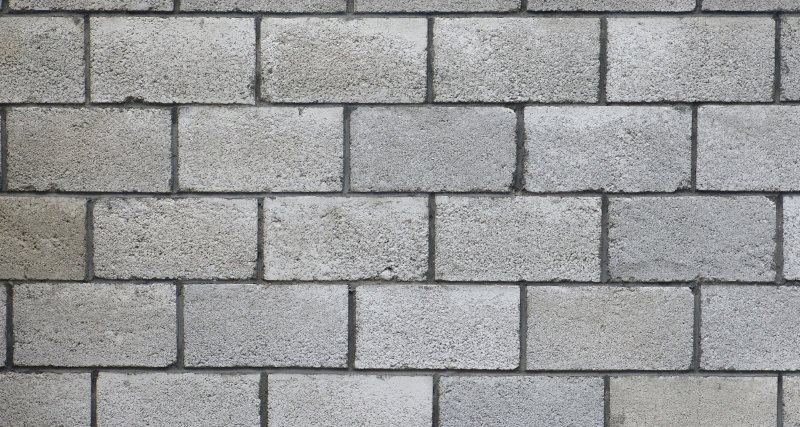
No. 2. Expanded clay blocks: pros and cons
The composition of expanded clay concrete determines its many positive aspects, which provide popularity to the material. Among the main advantages of expanded clay concrete blocks:
- excellent thermal insulation qualities, therefore, the material was chosen by the inhabitants of the Scandinavian countries. For severe climatic conditions of our country, such blocks are indispensable. The coefficient of thermal conductivity of expanded clay concrete of the D500 grade is 0.17-0.23 W / m * K, of the D1000 brand - 0.33-0.41 W / m * K;
- not bad soundproofing;

- low construction cost. The price of expanded clay concrete is comparable to the cost of other lightweight concrete blocks, but significantly lower than the price of brick. If we take into account the reduction in the cost of arranging the foundation, fewer joints, then we can say that a house made of expanded clay concrete will cost about a third cheaper than a brick house;
- fast construction timedue to the large size of the blocks and their relatively low weight;
- low load on foundation;
- sufficient strength;
- vapor permeability allows the walls of the house to breathe and removes excess moisture;
- moisture and frost resistance, resistance to fire (blocks do not melt and do not burn), mold and rodents;
- durability, which is achieved due to moisture and frost resistance and is at least 75-100 years;
- environmental friendliness, in fact only natural materials are a part;
- lack of shrinkage;
- the ability to use both traditional mortar and glue for masonry.

Expanded clay blocks also have disadvantages:
- work difficulties with the material. If many blocks (e.g. polystyrene concrete) you can cut with a hacksaw and easily give them the necessary shape, then expanded clay concrete will have to be cut with a saw with teeth from Pobedit - the reverse side of strength;
- mounting difficulty It cannot be denied, but this problem should not be overestimated either. For example, anchor bolts and dowels are normally kept in expanded clay concrete walls;
- vapor permeability of the material, although it is, but it is less pronounced than that of brick, so it is better to provide high-quality in the house ventilation;
- Another drawback is often called the formation of cold bridges, but it is more likely to be pulled over the ears, since it takes place to be absolutely always when the walls are erected from separate elements. It is possible to get rid of the cold bridges if the walls are erected from expanded clay concrete using monolithic technology;
- if it is planned to build a multi-storey massive building from expanded clay concrete, then careful professional calculations cannot be dispensed with;
- Another doubtful drawback is the need for cladding blocks of expanded clay concrete, as they do not look very aesthetically pleasing. Yes, there is not much beauty in them, but today almost all houses are finished, with the exception of which are only wooden. But as decoration you can use anything: sidingstucco with painting, a rockdecorative brick.

No. 3. Types of expanded clay blocks by purpose
Expanded clay blocks by the presence or absence of voids can be divided into two fundamentally different groups:
- corpulent;
- hollow.
Solid blocks - This is a structural material with high density and relatively high weight. Bearing and non-bearing walls are erected from it, even multi-storey buildings can be built.
Hollow blocks thanks to the openings inside they are distinguished by improved thermal insulation qualities, they are suitable for the construction of partitions and load-bearing walls of one-story buildings.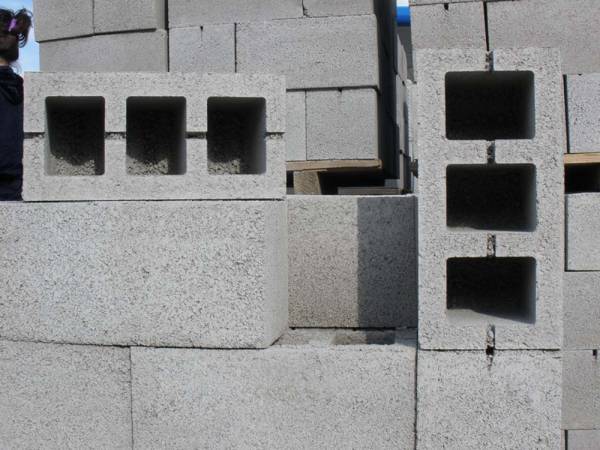
Number 4. Expanded clay block size
The size of expanded clay concrete blocks is usually divided into:
- wall;
- septum.
It is clear that the former are used for laying external walls. They should have certain indicators of strength and density, which will be discussed later. In size, they can be 288 * 138 * 138, 288 * 288 * 138, 290 * 190 * 188, 390 * 190 * 188, 190 * 190 * 188, 90 * 190 * 188 mm. By fullness are full-bodied and hollow.
Partition blocks, as the name suggests, are used for laying internal partitions. They have less weight, which ensures a decrease in the load on the foundation. By size, as a rule, partition blocks are produced 590 * 90 * 188, 390 * 90 * 188, 190 * 90 * 188 mm.
Some enterprises produce blocks that do not match the above sizes - they are carried out not according to GOST, but according to TU, which the manufacturer can determine for himself. As a rule, large-format blocks are produced according to TU.
Separately, it is worth noting facing blocksthat are produced by some enterprises.They have dimensions of 600 * 300 * 400 mm, are produced when dyes are added to the solution, and have a relief decorative surface.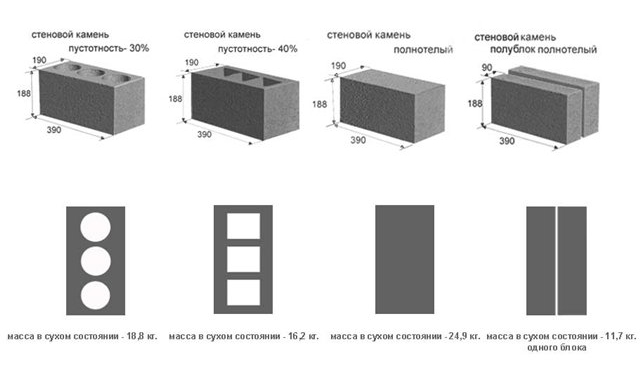
No. 5. Strength grade of expanded clay concrete blocks
When choosing expanded clay concrete for the construction of a house, garage, partitions, utility rooms and other buildings, it is necessary to take into account a lot of operational indicators of the material: strength, density, frost resistance and thermal conductivity. All of them are interconnected. Let's start with strength.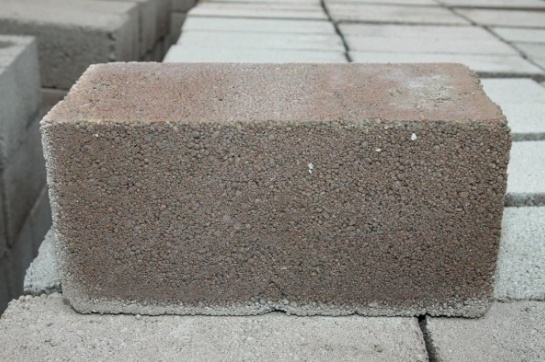
Durability called the ability of the material to withstand loads and resist fracture. Typically, the strength of expanded clay is indicated by the letter M and the number following it from 25 to 100which means how many kilograms each cm can withstand2 block surface. M25 block can withstand 25 kg / cm2and M100 - 100 kg / cm2. In private construction, as a rule, blocks with a strength higher than M100 are not used: for the construction of walls, blocks M75-M100 are used, for partitions - M35-M50. In industrial and multi-story construction, blocks of greater strength can be used.
It is worth noting that the M75 unit can withstand as much as 65 kg / cm275 or 80 kg / cm2. Despite inaccuracies, this method of classification of expanded clay concrete continues to be used. A much more accurate option is strength classes, which are marked through the letter B. This is strength with guaranteed security. The numerical indicator is from 2.5 to 40: the higher it is, the more durable the block will be. M100, for example, corresponds to B7.5.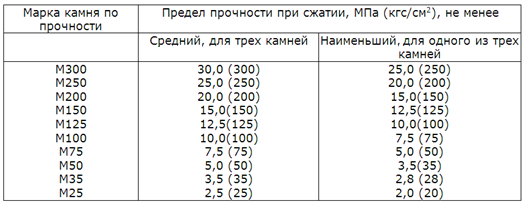
No. 6. Expanded clay density
Another important indicator is density. The lower the density, the higher the thermal insulation quality. On the other hand, the higher the density, the higher the strength and resistance to moisture. The density of the blocks is marked with the letter D followed by a coefficient 350 to 1800. The coefficient is equal to the density expressed in kg / m3.
The scope of use of the material depends on the density:
- building blocks with density from D1100 to D1800 have compressive strength from M100 to M500 and high frost resistance, which allows them to be used for the construction of load-bearing walls, which impose decent loads;
- structural insulation blocks from D600 to D1400 have compressive strength M35-M100, frost resistance F15-F100, ideal for private construction, because they have excellent thermal insulation performance with sufficient strength;
- heat insulating blocks density D350-D900 with compressive strength M25 can only be used for the construction of partitions and increase the thermal insulation of load-bearing walls.

Number 7. Frost resistance and thermal conductivity of expanded clay concrete
Frost resistance called the ability of the material to withstand sudden changes in temperature. This indicator is determined by the number of shock freezing and thawing, marked with the letter F. For expanded clay concrete, this indicator can vary from 25 to 300, but in private construction use material F15-F100. For northern regions, it is better to take material with frost resistance F50-F75. Blocks with low frost resistance are suitable only for indoor use.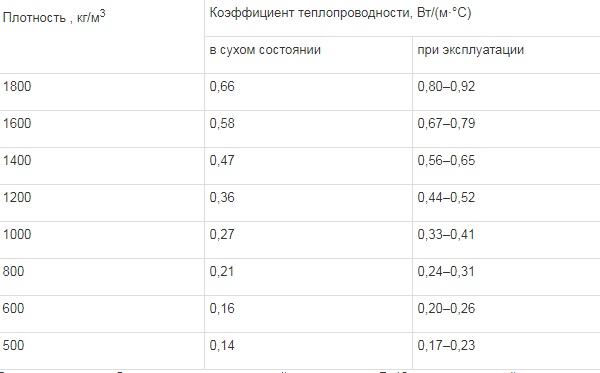
Thermal conductivity material directly depends on density. For the D1000 block, it is 0.33-0.41, D1400 0.56-0.65, etc. (see the table). Depending on which block is chosen for construction and the region in which the house will be located, the calculation of the thickness of expanded clay and analyze the need for the use of insulation:
- first we determine the value of the normalized heat transfer resistance, it can be seen in the table. Let's say we are dealing with the construction of a house in Moscow, then the desired value is 3.28 m2* K / W;
- determine the coefficient of thermal conductivity of the building material. Suppose we took D1000 blocks, the average value for them is 0.37 W / m * K, the size is 288 * 288 * 138, when laying in one row, the wall thickness is 28.8 cm;
- resistance to heat transfer from expanded clay wall 0.288 / 0.37 = 0.78 m2* K / W, it remains to provide another 3.28-0.78 = 2.5 m2* K / W, for which 10 cm is enough polystyrene foam with a coefficient of thermal conductivity of 0.041 W / m * K.
Number 8. What to look for when choosing?
A visual inspection can tell a lot about the quality of the material. Pay attention, first of all, to such moments:
- block geometry. It does not interfere with comparing several samples and measuring their parameters. From the same blocks it will be much easier to build, and the house will turn out to be of higher quality. Unequal blocks are subject to shrinkage and swelling;
- all edges and corners should be smooth and without chips;
- color of quality made block - dark gray, like asphalt after rain. A speck of white, black or yellow indicates an excess sand and violation of production technology;
- the surface of the block should be rough;
- the weight of blocks from one batch should be the same, only a small deviation is permissible. Naturally, there should not be any chips on the surface.

No. 9. The best manufacturers of expanded clay concrete
Today, there are many factories producing such promising building material, and there is a great risk of stumbling on low-quality goods produced in inappropriate conditions. A normal manufacturer is not afraid to show the production process and invite the buyer to the factory, he can provide all the necessary quality certificates and test results. Let us dwell on the largest manufacturers of expanded clay concrete blocks:
- Cheboksary Construction Plant - one of the largest enterprises in the field, produces up to 7500 blocks per day, has passed all the necessary and voluntary certification, is personally involved in logistics issues (delivery to almost all regions of the country) and is without intermediaries, which reduces the price of goods. Expanded clay blocks are made with strength M35-M100, density D1050-D1500, frost resistance F35-F50 and different sizes, including partition and wall, hollow and full;
- Keramzit CJSC - An enterprise specializing in the production of a wide range of expanded clay products, is equipped with its own laboratory and modern equipment. Delivery is carried out in Ryazan and the Ryazan region. Full-body, hollow blocks, blocks with ridges are produced. The plant offers several series of blocks, divides them by strength and density, the choice is huge;
- Concrete plant "Lenoblbeton" produces a wide range of building materials, including and expanded clay high strength (M100-M200);
- LLC TPA Unite - An enterprise located in the Moscow region. Production is carried out in accordance with GOST. Expanded clay blocks - the main specialization of the plant. It produces products of different sizes, voids, strength and density, high quality;
- Keramzit LLC located in the Tula region, produces blocks of different sizes and with different characteristics, including foundation blocks. Production is carried out strictly in accordance with GOST.

No. 10. Expanded clay blocks do it yourself
Independent manufacture of expanded clay concrete can significantly reduce the cost of building a house. As a rule, they make small batches of material with their own hands for the construction of simple small buildings, otherwise the complexity of the work will simply be unjustified.
In addition to the already known ingredients, you will need special equipment, it can be rented. Will be needed concrete mixer no less than 130 liters. You will also need a vibrating machine, it already has molding containers, so you can not bother with their production. Otherwise, you will have to make them from metal or wood.
The process of manufacturing claydite-concrete blocks with your own hands looks like this:
- mixing components in a concrete mixer.First mix 3 parts sand and 1 part cement, then add 1-1.2 parts of water, and then another 6 parts of expanded clay. Everything is thoroughly mixed, you may need to add a small amount of water if the mixture is too dry. Some add a little liquid soap to provide better viscosity;
- the mixture is portioned placed in the mold the machine and include vibration, excess solution is removed;
- the plate with the finished block rises, the workpieces are dried for 2 days, then the steel plates are removed;
- without using a machine, the process is somewhat more complicated and longer. It will be necessary to pour the solution into pre-prepared and greased forms and carefully tamp. It is better to use blocks no earlier than after 28 days.
If there is no self-confidence, then it is better to buy finished material with well-known performance characteristics. Subject to production technology (famous manufacturers can be trusted) and masonry technology, a house made of expanded clay concrete will last a very long time.

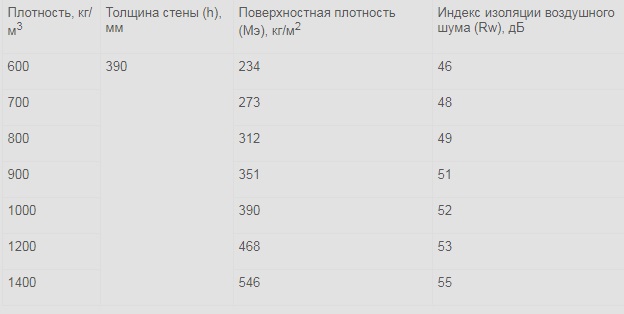
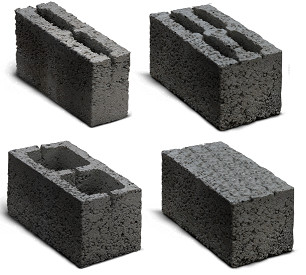
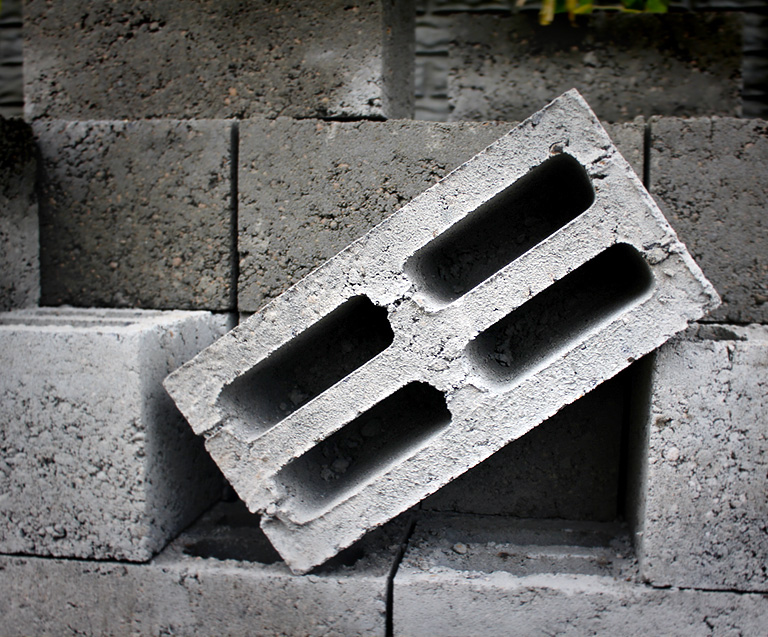
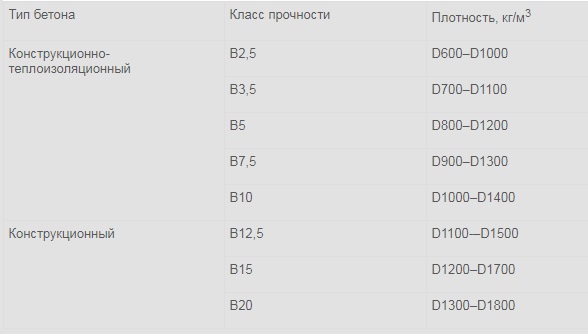
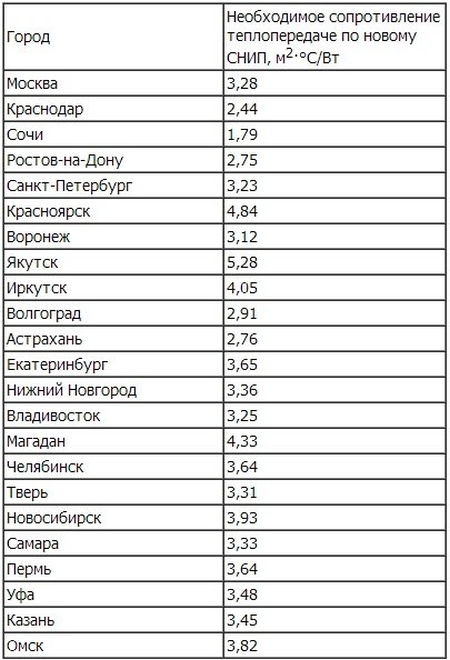
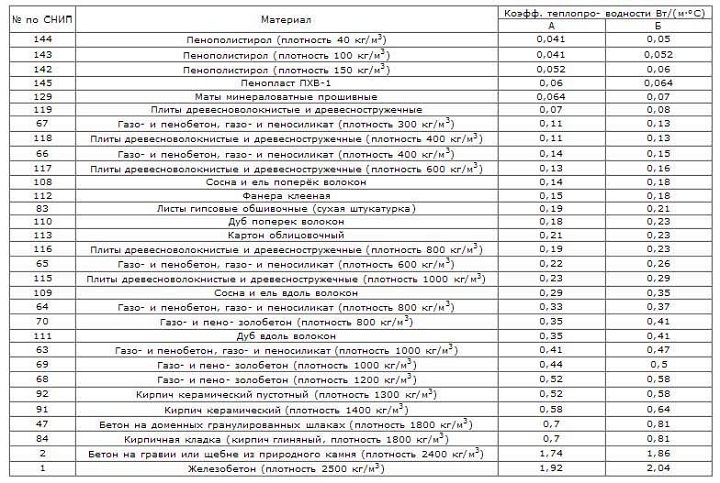
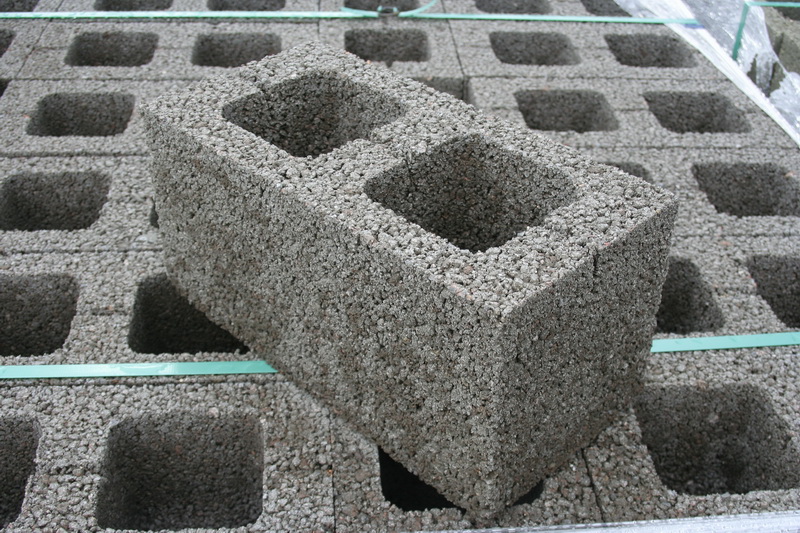
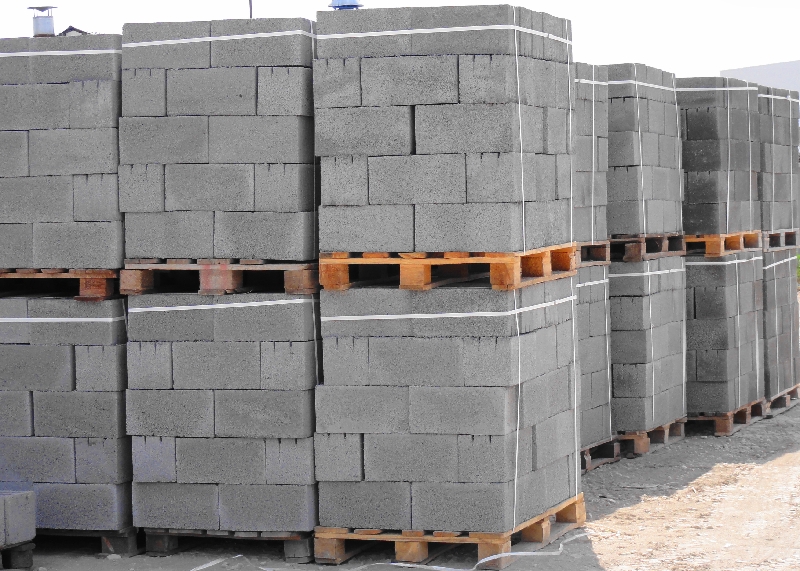
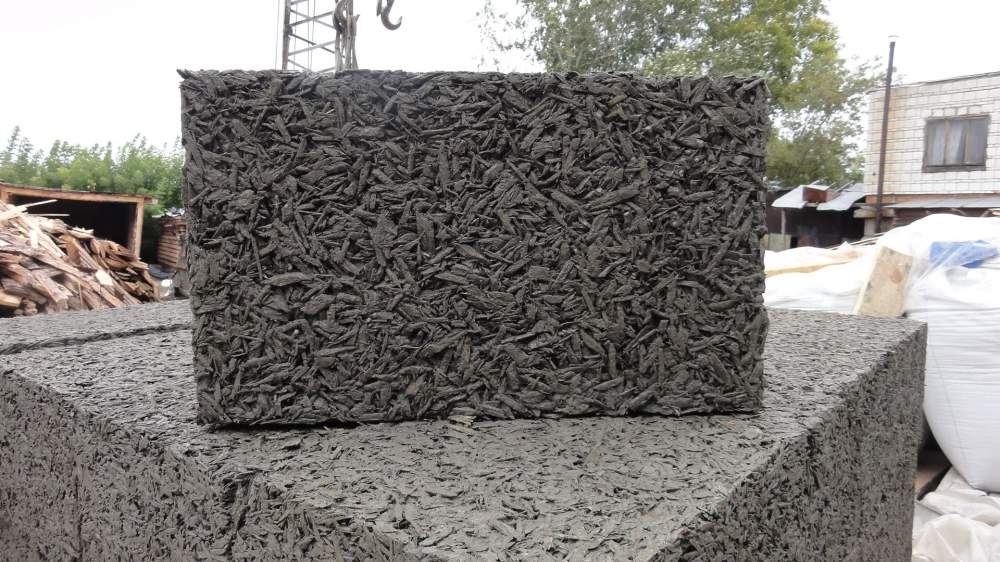
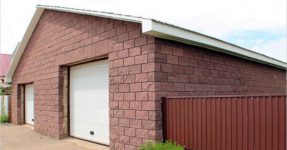
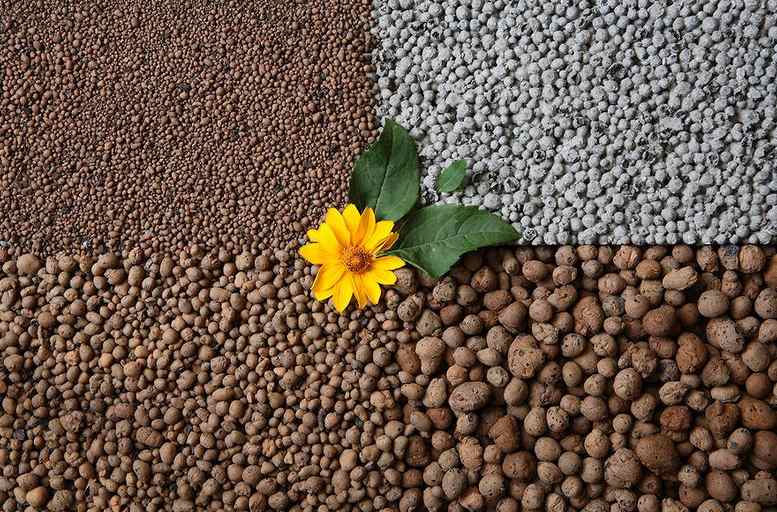
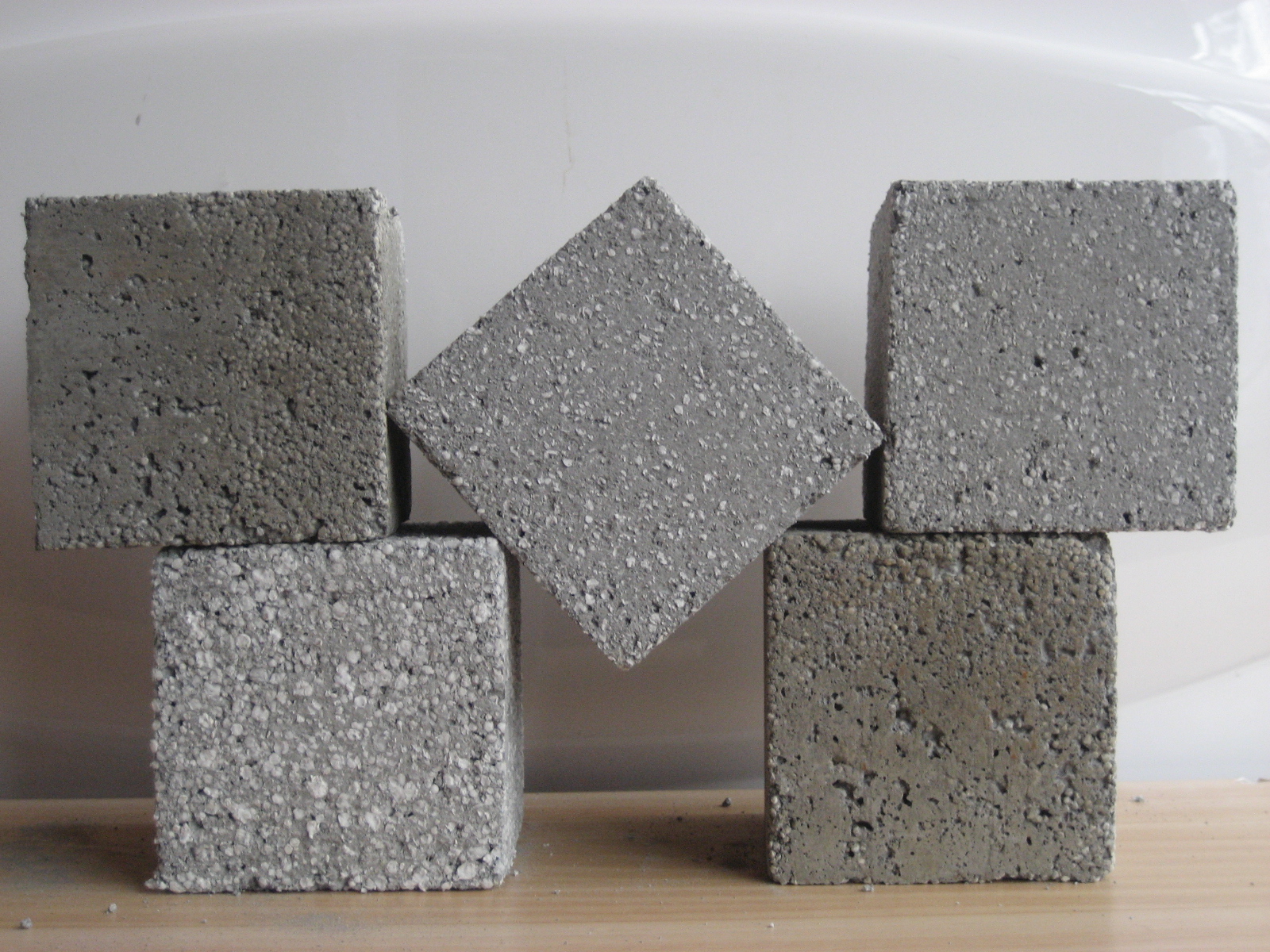
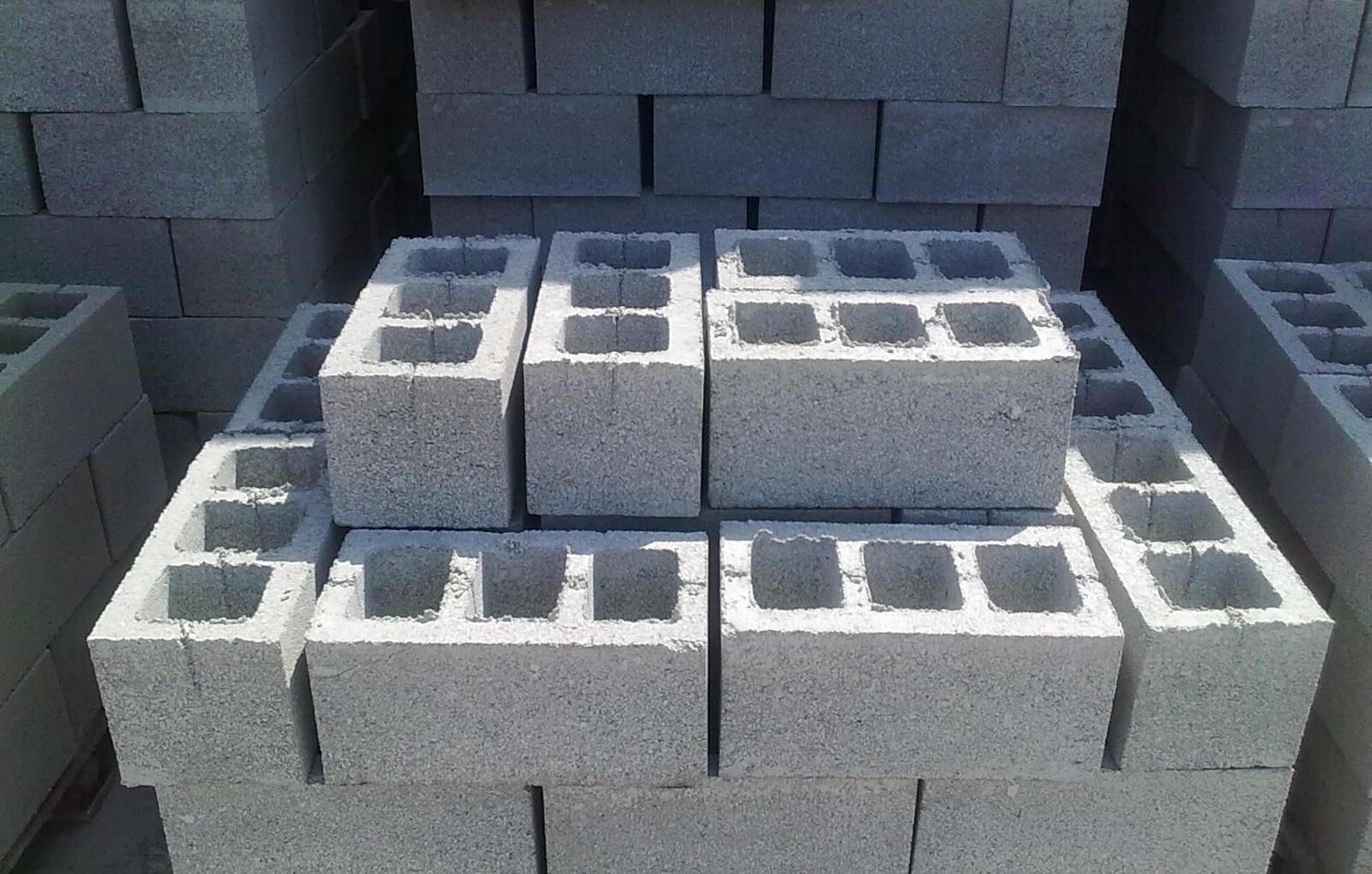
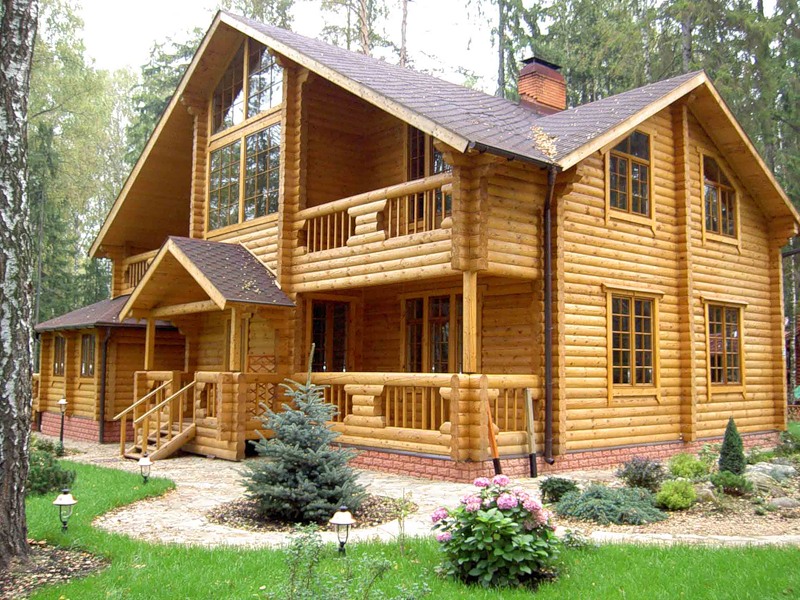
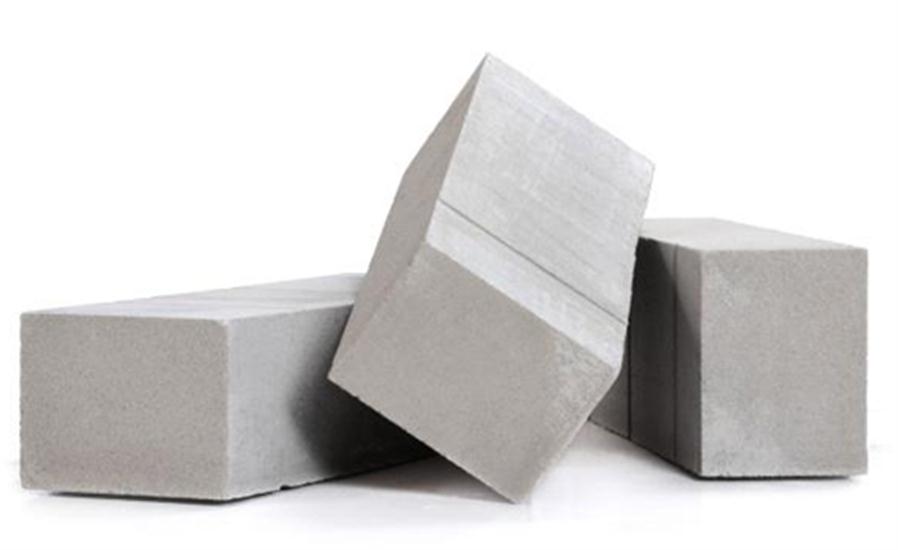
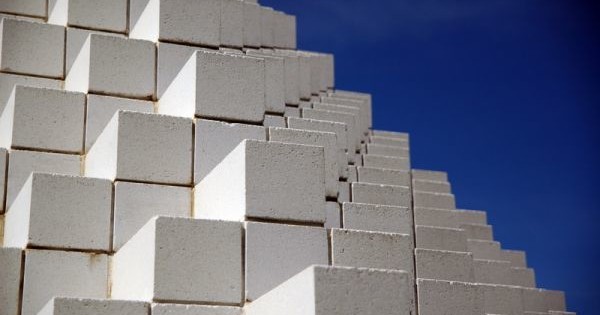
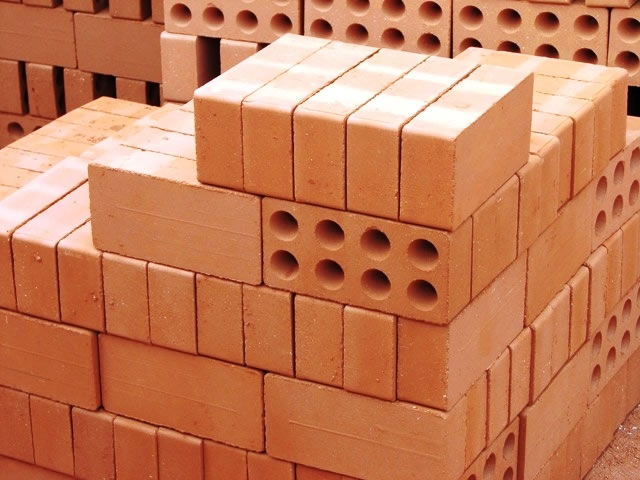
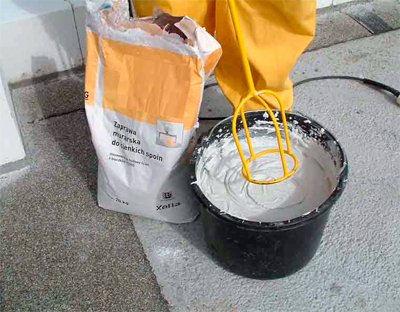
You forgot about the plant of expanded clay concrete blocks IzhKomStroy in Udmurtia. The production was opened in 2017, for a year it took a leading position in the region due to the highest quality of products, modern technical equipment of the expanded clay block production itself.